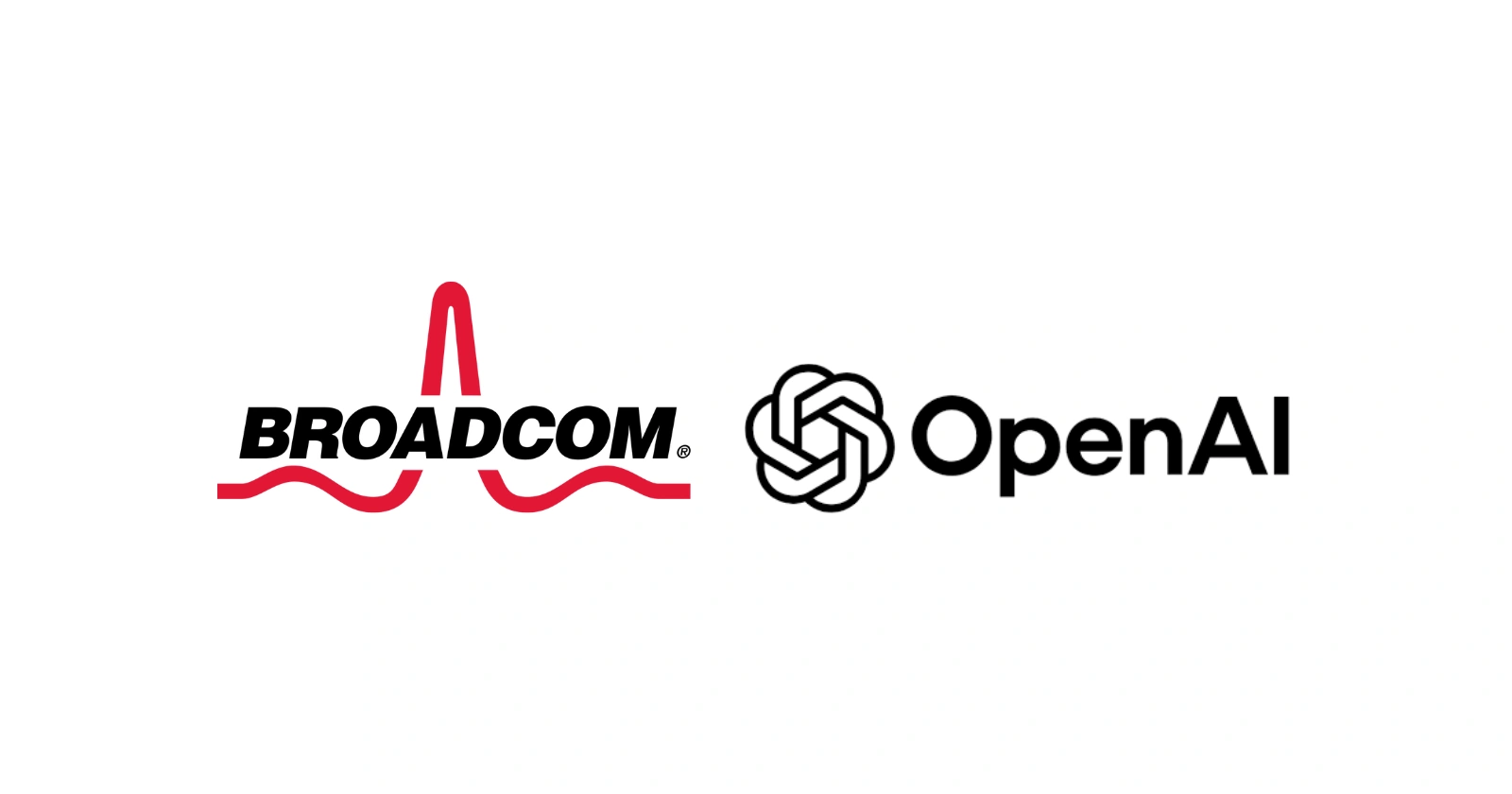In a significant development that underscores the escalating race for artificial intelligence supremacy, OpenAI has announced plans to manufacture its first custom AI chip in partnership with semiconductor powerhouse Broadcom.
Scheduled for production in 2026, this initiative represents a pivotal step for the ChatGPT creator, aiming to bolster its internal computing infrastructure amid unprecedented demand for AI processing capabilities. The partnership, valued at over $10 billion in orders, highlights OpenAI’s determination to secure a more autonomous position in the AI ecosystem, where access to high-performance hardware has become a bottleneck for innovation.
This announcement comes at a time when AI technologies are transforming industries, from healthcare diagnostics to autonomous vehicles. OpenAI, founded in 2015 and backed by Microsoft, has relied heavily on external suppliers like Nvidia for the GPUs that power its generative AI models. However, with the explosive growth of tools like ChatGPT, which now serves millions of users daily, the company faces mounting pressure to optimize costs and performance.
According to reports from the Financial Times and Reuters, the new chip will be co-designed with Broadcom and fabricated by Taiwan Semiconductor Manufacturing Co. (TSMC), ensuring it meets the rigorous demands of training and running large language models.
Broadcom’s involvement brings proven expertise to the table. The California-based firm, known for its custom silicon solutions, has seen its AI-related revenue skyrocket. During a recent earnings call, CEO Hock Tan alluded to a “mystery” customer committing to substantial orders, later confirmed as OpenAI by sources familiar with the matter. This deal not only propels Broadcom’s market capitalization toward $1.7 trillion but also positions it as a key player in the custom AI chip space, challenging Nvidia’s longstanding dominance.
Driving Forces Behind OpenAI’s Chip Strategy
The decision to develop an in-house AI chip stems from OpenAI’s need to address critical challenges in AI deployment. Generative AI systems require enormous computational resources; for instance, training models like GPT-4 involves processing petabytes of data, often costing millions in hardware alone. OpenAI CEO Sam Altman has publicly emphasized the scarcity of computing power, stating in a recent interview with CNBC that “the demand for AI compute is outpacing supply, and we must innovate to keep up.” By creating a specialized chip, OpenAI aims to reduce dependency on Nvidia’s GPUs, which have faced supply shortages and high prices amid global demand surges.
Research from Statista indicates that the global AI chip market reached approximately $53 billion in 2023 and is forecasted to grow to $92 billion by 2025, driven by advancements in machine learning and deep learning applications. OpenAI’s chip, intended primarily for internal use rather than commercial sale, will focus on efficiency gains. Sources close to the project, as reported by The Wall Street Journal, suggest it will incorporate advanced features like high-bandwidth memory to handle complex AI workloads more effectively than general-purpose processors.
This move also aligns with broader economic considerations. The AI infrastructure boom has led to skyrocketing energy consumption in data centers, prompting companies to seek power-efficient alternatives. A study by McKinsey & Company estimates that AI could add $13 trillion to global GDP by 2030, but only if hardware innovations keep pace with software developments. OpenAI’s partnership with Broadcom, which includes collaboration on chip design since last year, leverages Broadcom’s experience in custom ASICs (application-specific integrated circuits) to achieve these goals.
The Broader Trend: Tech Giants Embrace Custom AI Silicon
OpenAI’s foray into custom chips is part of a larger industry shift where major players are investing billions to tailor hardware for AI-specific tasks. This trend reduces reliance on Nvidia, which controls about 80% of the AI accelerator market, according to a 2024 report from Omdia. Companies like Google, Amazon, and Meta have already deployed proprietary chips, achieving cost savings of 30% to 40% in some cases.
Google pioneered this approach with its Tensor Processing Units (TPUs), first introduced in 2016. Now in their fifth generation, TPUs power services like Google Search and YouTube recommendations, processing trillions of operations per second. Amazon Web Services (AWS) followed suit with Trainium chips for training AI models and Inferentia for inference tasks, as detailed in AWS’s 2024 announcements. These chips integrate seamlessly with AWS’s cloud ecosystem, offering customers lower latency and reduced costs compared to off-the-shelf GPUs.
Meta, meanwhile, unveiled its Meta Training and Inference Accelerator (MTIA) in 2023, optimized for ranking and recommendation algorithms that drive Facebook and Instagram. Testing began in early 2025, with full deployment expected soon, according to Reuters sources. This chip emphasizes energy efficiency, crucial for Meta’s vast data centers handling billions of user interactions daily.
To illustrate the competitive landscape, consider the following table comparing key custom AI chips from leading companies:
| Company | Chip Name | Launch Year | Key Features | Primary Use Case |
|---|---|---|---|---|
| TPU v5 | 2024 | High-bandwidth memory, scalable pods | Cloud-based AI training/inference | |
| Amazon | Trainium 2 | 2024 | Ultra-low latency, cost-efficient | AWS machine learning workloads |
| Meta | MTIA | 2023 | Optimized for sparse data processing | Social media recommendations |
| OpenAI | (Unnamed) | 2026 | Custom design with Broadcom/TSMC | Internal AI model development |
| Microsoft | Maia 100 | 2023 | Integrated with Azure infrastructure | Enterprise AI services |
This table, based on data from company reports and TechCrunch analyses, shows how each chip addresses unique needs, from scalability to energy savings. The rise of these custom solutions could erode Nvidia’s market share, projected to drop to 70% by 2027 per HSBC analysts.
Market Reactions and Economic Implications
The news of OpenAI’s partnership sent ripples through financial markets. Broadcom’s shares surged 15% in a single trading session, adding over $200 billion to its market value, as reported by Bloomberg. Conversely, Nvidia and AMD experienced declines of 2-3%, reflecting investor concerns over increased competition. Posts on X (formerly Twitter) from analysts like those at Sherwood News highlighted this shift, noting that “Broadcom’s $10B OpenAI deal signals custom chips taking a bigger bite of the AI market.”
Economically, this development could democratize AI access. By lowering hardware costs, companies like OpenAI can accelerate model iterations, potentially leading to breakthroughs in fields like drug discovery and climate modeling. A 2025 report from PwC predicts that AI will contribute $15.7 trillion to the global economy by 2030, with custom chips playing a central role in enabling widespread adoption.
However, challenges loom. Supply chain vulnerabilities, exacerbated by geopolitical tensions, could delay production. TSMC, a key fabricator, faces risks from U.S.-China trade restrictions, as noted in a recent CNBC analysis. Additionally, the high R&D costs—OpenAI has raised over $6 billion in recent funding rounds, per Crunchbase—underscore the financial hurdles for such ventures.
Future Outlook: AI Chips in a Maturing Market
Looking ahead, the AI chip sector is poised for explosive growth. Projections from Roots Analysis estimate the market will expand from $32 billion in 2024 to $847 billion by 2035, at a 35% CAGR. This surge will be fueled by edge computing, where AI processes data closer to the source, reducing latency in applications like self-driving cars.
OpenAI’s chip could catalyze further innovations, such as hybrid systems combining quantum and classical computing. Collaborations with firms like AMD, which supplies complementary processors, will be crucial. As Altman remarked in a LinkedIn post, “Building our own silicon is essential for scaling AI responsibly.”
Yet, ethical considerations must not be overlooked. With AI’s potential for misuse, regulators are scrutinizing hardware developments. The European Union’s AI Act, effective from 2024, mandates transparency in high-risk systems, which could influence chip design standards.
In summary, OpenAI’s 2026 chip launch with Broadcom marks a watershed moment in AI hardware evolution. By fostering independence and efficiency, it not only strengthens OpenAI’s position but also accelerates the industry’s transition toward customized, sustainable computing solutions. As tech leaders continue to innovate, the future of AI promises enhanced capabilities that could redefine human progress.



